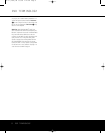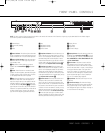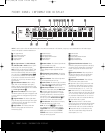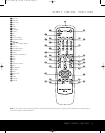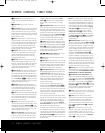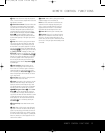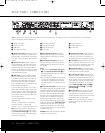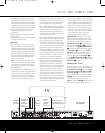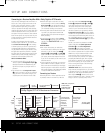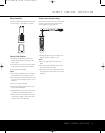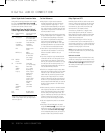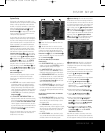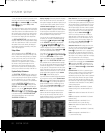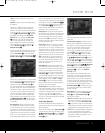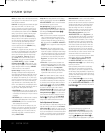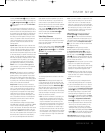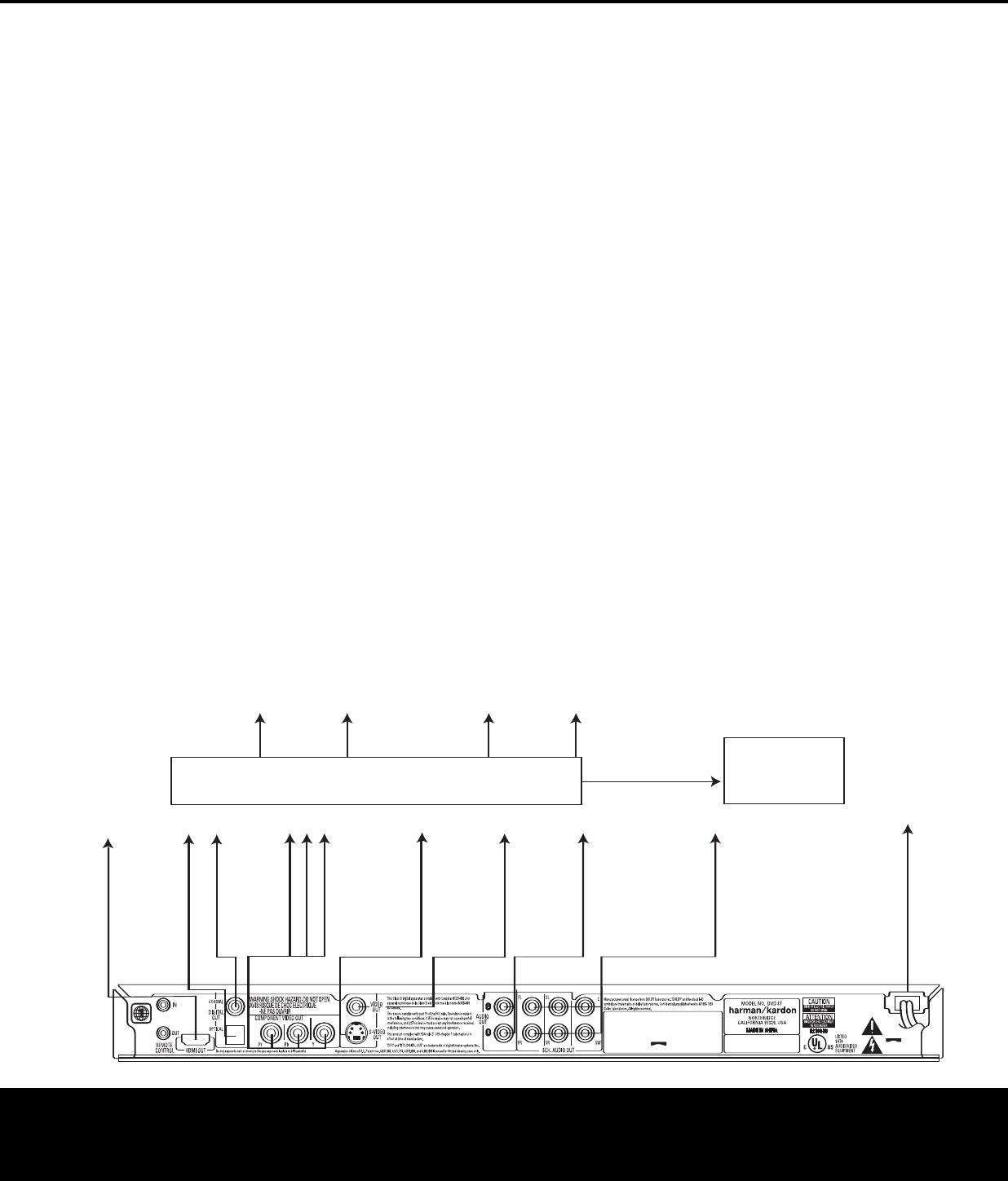
16 SETUP AND CONNECTIONS
SETUP AND CONNECTIONS
One of the major advantages of the DVD format is its
ability to use a variety of digital audio formats for the
ultimate in sonic performance. However, in order to
e
njoy the benefits of digital audio, you must use a
receiver or processor that has digital audio decoding
capabilities and make an optical or coaxial digital audio
connection between the DVD 37 and your home the-
ater system. This simple connection is made as shown
below with an optional coax or optical cable. Only one
of these connections is required, and both should not
be made at the same time.
I
n order to take advantage of the high-resolution
DVD-Audio output of the DVD 37, you must connect
the
6-Channel Audio Outputs 9 to the matching
6-channel inputs on your receiver or processor. Only
compressed PCM, Dolby Digital or DTS tracks that
may be present on the disc may be listened to using
the digital audio outputs. Thus, the DVD 37 decodes
the digital signal and outputs separate signals for each
channel: front left, center, front right, surround right,
surround left and low-frequency effects (LFE).
NOTES FOR ANALOG AUDIO:
• If you wish to use the DVD 37 as the input for a
multiroom system, the
Analog Audio Outputs ª
should be connected to the standard analog left/
right DVD or CD inputs on your digital receiver or
processor.
• The connection from the
Analog Audio Outputs
ª to the TV is optional. If you plan on occasionally
using your DVD 37 alone, without turning on your
complete system,
this connection must be made.
• When the audio signal is to be fed to an analog
receiver rather than to the TV, connect the
Analog
Audio Outputs
ª to any analog audio inputs on
y
our receiver or processor. The DVD 37 will “down-
mix” multichannel recordings to two channels.
• The analog audio connection should also be made
if you wish to play high-resolution 96kHz PCM
audio discs where your receiver does not support
96kHz processing.
• In each of these four cases in which the
Analog
A
udio Outputs
ª a
re used, set the bass manage-
ment line of the
AUDIO SETUP menu to
STEREO.
NOTES ON VIDEO:
• With multiple video sources, your audio/video
receiver can be used for selecting the video signal
and routing it to the TV. Connect the
HDMI 2,
Component ∞, Composite § or S-Video ¶
output of the DVD 37 to the correct video input on
your receiver, and the video outputs of the receiver
to your TV. For more details, see the manual for your
audio/video receiver.
• If your receiver has only DVI inputs, you may use an
optional HDMI-to-DVI cable or adapter for the con-
nection to the receiver. In addition, the video display
used with your system must be HDCP-compatible in
order to take advantage of the HDMI output, whether
it is used with HDMI or DVI connections.
Connecting to a Receiver
When using the DVD 37 with an audio/video receiver
or processor
, connect it as follows. First, make one
of the video connections (Composite Video ç,
S-Video ∂, Component Video é or HDMI ˙)
to the video input jacks on the A/V receiver, and
t
hen connect the receiver’s video monitor output
to the TV. If you will sometimes use the TV without
the audio component, you may optionally make the
Analog Audio Connection ∫ to the TV. In addition,
to benefit from the high-resolution surround sound for-
mats recorded on DVD-Audio discs, which are not out-
put via the HDMI connection, you will need to make
the 6-Channel Audio Connection å to your receiver
or processor.
Second, if your receiver or processor is not HDMI-
capable, make either the
Optical Digital Audio
Connection
© or the Coaxial Digital Audio
Connection
ƒ,
to the receiver or processor.
Remember that when the HDMI connection is used
with a receiver or processor that is compliant with the
HDMI format, a single connection suffices for both
audio and video, except for DVD-Audio discs, as
noted. If your receiver or processor is not capable of
processing the HDMI audio signal, then a
separate
audio connection is required. If your receiver/
processor
has multiroom capability, you may also connect the
DVD 37’s analog audio outputs to the DVD analog
audio inputs on the receiver.
IMPORTANT NOTE: Make certain that any device
being connected, including the DVD 37, your receiver
or processor and your TV or video display, is turned off
whenever you make connections between products.
When using the
HDMI é connection, turn on your
system components in this order: 1) television or video
display, 2) receiver or processor, and 3) DVD 37.
郩˙ ∂ ç ∫ å
To Y (green)/
Pb (blue)/
Pr (red)
component
video
connectors
To S-video
input
connectors
To coaxial
digital
audio
input
connectors
To optical
digital
audio
input
connectors
To analog audio
input connectors
(red/white)
on the TV
or receiver
(see above)
To 6-channel
analog audio
inputs on
receiver
To video
input
connectors
(yellow)
To power outlet
(AC 120V/60Hz)
Dolby Digital/DTS A/V Receiver or Processor
Front Speakers
(Left/Right)
Surround Speakers
(Left/Right)
Center
Speaker
Subwoofer
HDMI, DVI, Component,
S-video and/or
Composite video
monitor outputs
TV
To
HDMI
or DVI
port
AC INPUT
120V~, 60Hz
13W
Connecting to a Receiver/Amplifier With a Dolby Digital or DTS Decoder
DVD 37 (120V) OM 8/7/06 4:10 PM Page 16



